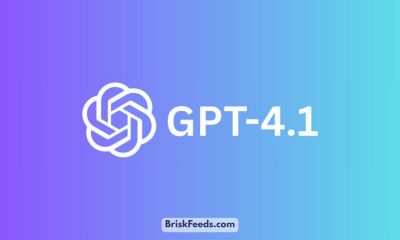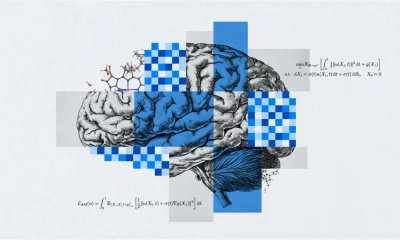AI
World’s First Quantum AI Song “Recurse” Released; Blends Tech and Creativity

A groundbreaking collaboration between UK-based startup Moth and British electronic artist ILĀ has resulted in the world’s first commercially available song, “Recurse,” created using quantum-powered generative AI. This innovative track, produced through Moth’s Archaeo platform, showcases the potential of quantum machine learning to enhance artistic creativity, blending cutting-edge technology with human artistry. As AI and quantum computing reshape creative industries, “Recurse” marks a milestone, though it also raises questions about the future of art and accessibility in this tech-driven era.
The creation of “Recurse” leverages Moth’s Archaeo platform, which uses Quantum Reservoir Computing (QRC), a form of quantum machine learning, to identify complex patterns in ILĀ’s music that traditional AI might overlook. Unlike other generative AI tools like Suno or Udio, Archaeo doesn’t generate music from scratch. Instead, it learns from small samples of an artist’s work, suggesting elements like basslines, synths, and drum patterns while allowing the artist to retain full control over instrumentation and arrangement. ILĀ described the process as “refreshing,” noting in a statement to The Next Web that the technology “works with you, not to replace you,” ensuring a human-led creative process. This approach aligns with other AI-driven creative tools, such as Google’s NotebookLM, which aim to augment rather than supplant human effort.
The quantum aspect of “Recurse” comes from the use of quantum computers provided by German startup IQM, which enable the AI to learn patterns and solve problems faster than traditional systems. Moth collaborated with Brazilian composer Eduardo Reck Miranda, a pioneer in quantum music research, to develop this technology. The result is a track that defies conventional music creation, accompanied by a visually striking “quantum blur” effect in its official video, reflecting its computational origins. This fusion of art and technology echoes broader trends in AI communication tools, where innovation is used to create novel user experiences, such as real-time translation.
“Recurse” has been hailed as a “defining moment” by Moth’s CEO, Dr. Ilana Wisby, who previously led Oxford Quantum Circuits. In a statement to Interesting Engineering, Wisby emphasized that the track demonstrates quantum AI’s ability to “support and enhance, not just take from, artists.” This focus on empowerment is crucial at a time when artists are increasingly wary of AI’s impact, as seen in recent AI copyright debates, where creators demand stronger protections against unauthorized use of their work. By prioritizing collaboration, Moth’s approach offers a potential model for ethical AI use in the arts.
However, the project also highlights challenges in accessibility and scalability. The use of quantum computing, while groundbreaking, is resource-intensive and not widely available, limiting its immediate applicability for most artists. The digital divide further complicates this, as smaller creators may lack the tools or knowledge to engage with such advanced technology, a concern also raised in AI language tool discussions about equitable access to tech. Additionally, while “Recurse” showcases AI’s potential to enhance creativity, it raises questions about the authenticity of art in an era where machines play a significant role, a debate that parallels AI privacy scandals over the ethical boundaries of technology.
The release of “Recurse” could pave the way for a new era of music production, where quantum AI becomes a standard tool for artists. If Moth can make this technology more accessible, it might democratize quantum-powered creativity, much like how AI-driven public safety tools have expanded access to critical resources. For now, “Recurse” stands as a testament to the possibilities of blending quantum computing and AI with human artistry, offering a glimpse into the future of creative expression. What do you think about quantum AI in music—does it enhance creativity or challenge the essence of art? Share your thoughts in the comments—we’d love to hear your perspective on this pioneering track.
AI
Groundbreaking Google AI Accessibility Tools Transform Android & Chrome!

The latest Google AI accessibility advancements are poised to dramatically reshape the digital landscape for users with disabilities. Timed perfectly for Global Accessibility Awareness Day (GAAD) 2025, Google has officially unveiled a suite of powerful new features for Android and Chrome. These updates prominently feature the integration of Google’s cutting-edge Gemini AI into TalkBack, Android’s screen reader. This empowers the tool to intelligently describe images and even answer specific user questions about visual content, thereby unlocking a much richer online experience for individuals who are blind or have low vision.
This significant push in Google AI accessibility underscores a deep-seated commitment to making technology universally usable. For the vast number of Americans and global users who depend on accessibility features, these enhancements promise a more intuitive and empowering daily digital interaction. The capability of TalkBack, now supercharged by Gemini, to move beyond basic image labels and provide intricate descriptions and contextual details about pictures represents a monumental leap. Users can now gain a far better understanding of photos shared by friends, products viewed online, or complex data visualizations.
New Google AI Accessibility Features: What Users Can Expect
A standout element of this Google AI accessibility initiative is undoubtedly the Gemini integration with TalkBack. Traditional screen readers often struggle with images lacking descriptive alt-text. Now, Gemini enables TalkBack to perform on-the-fly analysis of an image, generating comprehensive descriptions. What’s more, users can interact by asking follow-up questions such as, “What is the person in the photo wearing?” or “Are there any animals in this picture?” and Gemini will provide answers based on its visual comprehension. This interactive element makes the visual aspects of the web far more accessible. These advancements mirror the broader trend of AI enhancing user experiences, seen also with OpenAI’s continuous upgrades to its ChatGPT models.
Beyond the Gemini-powered TalkBack, other crucial Google AI accessibility updates include:
- Crystal-Clear Web Viewing with Chrome Zoom: Chrome on Android is introducing a significantly improved page zoom function. Users can now magnify content up to 300%, and the page layout smartly adjusts, with text reflowing for easy reading. This is a fantastic improvement for users with low vision.
- Smarter Live Captions for All Audio: Live Caption, the feature providing real-time captions for any audio on a device, is becoming more intelligent. It promises enhanced recognition of diverse sounds and speech, along with more options for users to customize how captions appear.
- Enhanced Smartwatch Accessibility: Google is also extending its Google AI accessibility focus to Wear OS. This includes more convenient watch face shortcuts to accessibility tools and improved screen reader support on smartwatches.
These Google AI accessibility tools are not mere incremental updates; they signify a dedicated effort to employ sophisticated AI to address tangible challenges faced by individuals with disabilities. Developing such inclusive technology is paramount as digital platforms become increasingly integral to all facets of modern life, from professional endeavors and education to social engagement and e-commerce. This commitment to using AI for societal benefit offers a refreshing contrast to concerns about AI misuse, such as the proliferation of AI-generated deepfakes.
The positive impact of these Google AI accessibility updates will be widespread. For people with visual impairments, the Gemini-enhanced TalkBack can make a vast amount of previously out-of-reach visual information accessible, promoting greater autonomy. For individuals with hearing loss, the upgraded Live Caption feature ensures better comprehension of video content, podcasts, and live audio. Similarly, users with low vision or dexterity issues will find the improved zoom and Wear OS functionalities make interactions smoother and more efficient. This dedication to accessibility is commendable, akin to how Meta AI Science is championing open access to scientific tools for broader benefit.
Google’s strategy of integrating these powerful features directly into its core products, Android and Chrome, ensures they are available to the broadest possible user base. This mainstreaming of accessibility is a significant statement and sets an important precedent for the technology industry. It highlights a growing recognition that accessibility is not a peripheral concern but a core tenet of responsible and effective technology design. As AI continues to advance, its potential to assist accessibility grows, though it simultaneously brings new ethical considerations, as seen in discussions around AI’s role in the film industry.
The GAAD 2025 announcements are a testament to Google’s ongoing dedication to building inclusive products. While these new Google AI accessibility tools represent a major stride, the path toward a completely inclusive digital environment is one of continuous improvement. User feedback and relentless innovation will be crucial for refining existing features and pioneering new solutions to meet the diverse needs of all users.
AI
Groundbreaking AI Film Company Launched by Brilliant Pictures and Largo.ai, Set to Reshape Movie Making
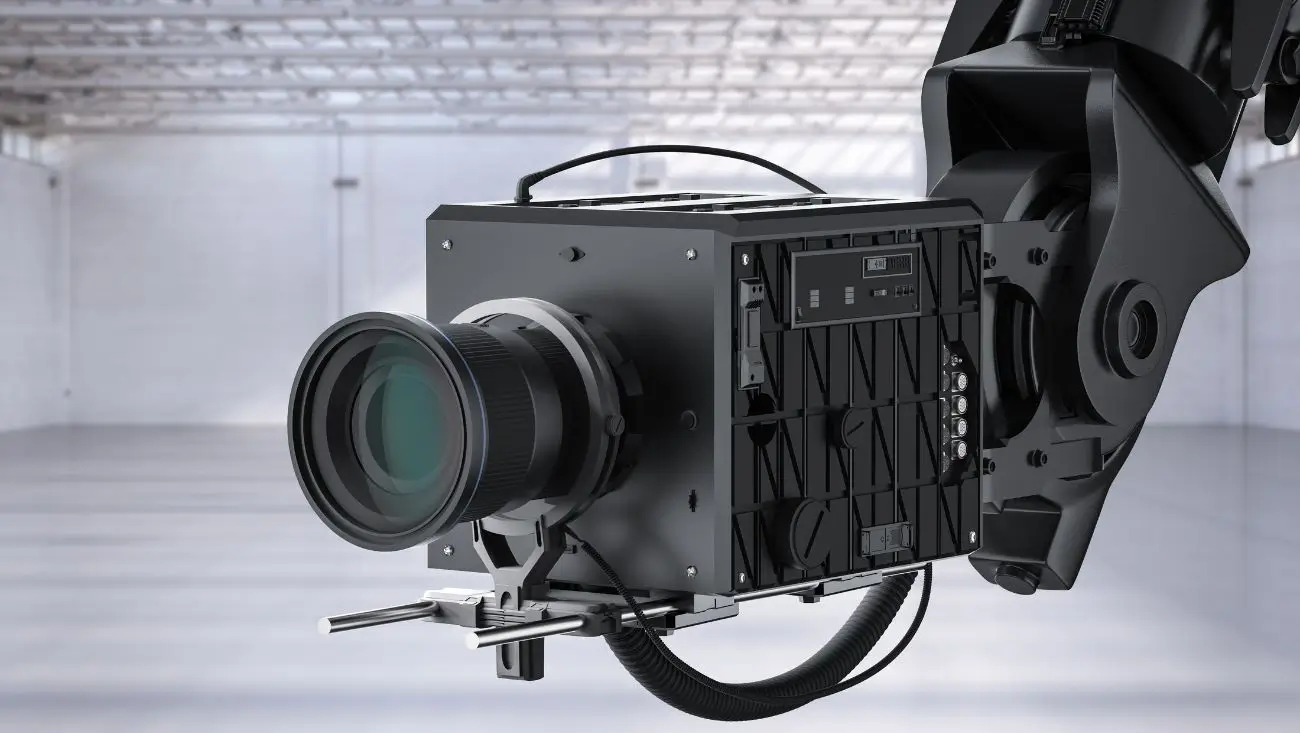
LONDON, UK – The landscape of film production may be on the cusp of a significant evolution with the announcement of a new AI film company. This venture, a collaboration between UK production house Brilliant Pictures and Swiss AI specialist Largo.ai, is being positioned as potentially the “first fully AI-automated film company.” The initiative intends to deeply embed artificial intelligence tools throughout the movie-making process, from initial script assessment to forecasting commercial success, a move that is generating keen interest and discussion across the entertainment industry in the United States and internationally.
The core of this partnership lies in integrating Largo.ai’s advanced AI platform into the operational framework of Brilliant Pictures. The ambition for this AI film company extends beyond using AI for isolated tasks; it envisions a comprehensive application of artificial intelligence to enhance efficiency and decision-making at multiple stages of film production. This includes leveraging AI for in-depth script analysis, providing data-driven casting insights, predicting a film’s box office potential, and optimizing marketing strategies.
The Strategic Impact of an AI Film Company on Cinematic Production
The formation of a dedicated AI film company carries substantial implications for the film industry. For Brilliant Pictures, this strategic alliance offers the potential to make more informed, data-backed decisions, mitigate the financial risks inherent in film production, and possibly identify commercially viable projects or emerging talent that might be overlooked by conventional methods. Largo.ai’s platform is recognized for its capacity to deliver profound analytical insights by processing extensive datasets related to film content, audience responses, and prevailing market trends. Such a data-centric methodology could result in films more precisely aligned with audience preferences, thereby potentially boosting their market performance.
Key operational areas where this AI film company intends to deploy AI include:
- Script Evaluation and Refinement: AI algorithms can meticulously dissect screenplays, identifying narrative strengths and weaknesses, character development arcs, and even forecasting audience reactions across different demographics, thereby informing script enhancements prior to production.
- Casting Process Augmentation: AI can sift through extensive actor databases, evaluating past performances, audience appeal metrics, and potential on-screen chemistry with other actors to propose optimized casting choices.
- Financial Viability Forecasting: Predicting a film’s financial outcome is a critical challenge. AI models, by analyzing a multitude of variables, can offer more robust financial forecasts, assisting producers in making more confident greenlighting and investment decisions. The quest for better financial models is ongoing in media, as evidenced by Netflix’s successful expansion of its ad-supported tier.
- Marketing and Distribution Optimization: AI can assist in pinpointing target audience segments and recommending the most effective marketing campaigns and distribution plans for specific films.
While the proponents of this AI film company highlight the potential for increased efficiency and creative support, the announcement has also understandably prompted discussions about the future of human roles within the entertainment sector. A primary concern is the potential effect on employment for professionals whose tasks might be augmented or automated by AI, such as script analysts, casting associates, or market researchers. The creative community remains highly attuned to AI’s growing influence, a sensitivity also seen in debates concerning AI’s role in music creation and artist remuneration, exemplified by the SoundCloud AI policy discussions.
Furthermore, broader questions arise regarding the artistic integrity of films produced with significant AI involvement. Can AI truly replicate the nuanced understanding of human emotion, complex storytelling, and cultural context that human creators bring? Some industry observers worry that an excessive dependence on AI could lead to more homogenized, risk-averse content that prioritizes predictable commercial success over bold artistic expression. The unique, often unquantifiable elements of creative genius could be marginalized if algorithmic predictions heavily influence creative choices. This concern is not unique to film, as similar issues arise with AI-generated imagery and the potential for deepfakes of public figures.
However, the leadership behind this AI film company asserts that the intention is for AI to serve as a powerful tool to assist and enhance human creativity, rather than to supplant it. The argument is that by automating more data-heavy and analytical tasks, AI can liberate human filmmakers to concentrate more fully on the core creative aspects of their work. The stated aim is to streamline the production process and improve the probability of creating films that are both critically acclaimed and commercially successful. The responsible and transparent use of AI is a key factor here, similar to OpenAI’s initiatives to share more about its AI model safety testing.
The Brilliant Pictures and Largo.ai partnership represents a forward-looking experiment that will undoubtedly be scrutinized by the global film industry. Should this AI film company achieve its objectives, it could catalyze a broader adoption of AI technologies in filmmaking, fundamentally reshaping industry practices from conception to audience engagement. While this journey is in its nascent stages, the narrative of Hollywood’s future now clearly includes a significant role for artificial intelligence. The continuous integration of AI into various sectors is evident, paralleling advancements like Meta AI Science’s contributions to open-source research tools.
AI
Game-Changer! OpenAI GPT-4.1 Rolls Out, Supercharging Your ChatGPT with Faster, Smarter AI
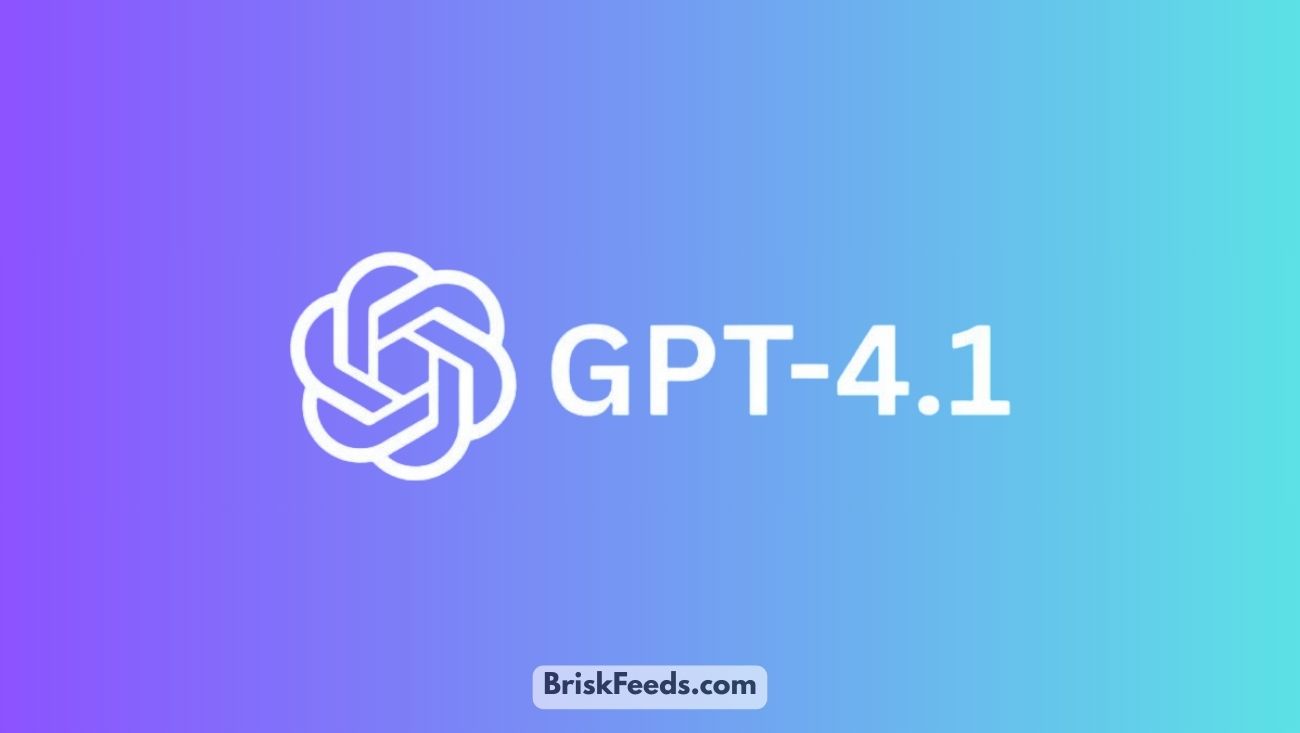
SAN FRANCISCO, USA – Prepare for an even smarter ChatGPT! OpenAI GPT-4.1 has officially launched, marking a significant evolution for the company’s flagship artificial intelligence models. This upgrade, now rolling out to ChatGPT Plus, Team, and Enterprise subscribers, promises enhanced performance, faster response times, and improved capabilities across a range of tasks, from complex reasoning to more sophisticated code generation. Even free ChatGPT users get a boost, with access to the new, more capable GPT-4.1-mini. This is a major development for the millions who rely on ChatGPT for work, creativity, and everyday queries.
The arrival of OpenAI GPT-4.1 signals OpenAI’s relentless push to refine and advance its AI technology. While GPT-4 was already a powerful tool, GPT-4.1 builds upon that foundation, offering what the company describes as better instruction-following, reduced instances of “laziness” (where the model might provide incomplete answers), and overall more helpful and accurate interactions. For users in the USA who have integrated ChatGPT into their daily routines, this upgrade could mean more efficient workflows and more reliable AI assistance. The rapid evolution of AI models is a constant theme, with companies continuously striving for better performance, similar to the ongoing development in AI for scientific research by Meta AI Science.
What OpenAI GPT-4.1 Means for Your ChatGPT Experience
So, what tangible benefits can ChatGPT users expect from OpenAI GPT-4.1? Key improvements highlighted by OpenAI include:
- Enhanced Intelligence & Instruction Following: The model is reportedly better at understanding nuanced instructions and delivering responses that more accurately reflect user intent. This could be particularly beneficial for complex problem-solving or creative writing tasks.
- Improved Coding Capabilities: GPT-4.1 is touted as being more proficient at generating, debugging, and explaining code across various programming languages, a boon for developers and those learning to code.
- Faster Response Times: While not always the primary focus over quality, speedier interactions make for a smoother user experience, especially for iterative tasks or quick queries.
- Reduced “Laziness”: OpenAI has specifically addressed feedback about previous models sometimes providing overly brief or incomplete answers, aiming for more thorough and helpful outputs with GPT-4.1.
For ChatGPT Plus, Team, and Enterprise users, OpenAI GPT-4.1 will become the new default, offering the most advanced capabilities. However, OpenAI hasn’t forgotten its massive free user base. The introduction of GPT-4.1-mini brings some of the architectural improvements and efficiencies of the larger model to those not on a paid plan. While “mini” implies it won’t match the full power of GPT-4.1, it’s positioned as a significant upgrade over the previous models available to free users, likely offering a better balance of performance and resource efficiency. This wider availability is crucial as AI tools become more mainstream, though it also raises concerns about misuse, such as the creation of AI-generated fakes like those of Billie Eilish.
The proliferation of AI models means users might soon have more choices than ever within ChatGPT. Some reports suggest that with these new additions, users could eventually face up to nine different AI models to select from within the platform, depending on their subscription tier and specific needs. This could range from the fastest, most efficient models for simple tasks to the most powerful, cutting-edge models for demanding applications. This increasing complexity also highlights the need for transparency, an area OpenAI has also been addressing with its safety evaluation disclosures.
The implications of a more powerful OpenAI GPT-4.1 are far-reaching. Businesses using ChatGPT for customer service, content creation, or data analysis can expect more capable and reliable outputs. Individuals using it for learning, brainstorming, or personal assistance will find the tool even more versatile. However, as AI models become more powerful, the importance of responsible use and understanding their limitations also grows. The potential for AI to generate convincing but incorrect information (hallucinations) remains a concern, although OpenAI continually works to mitigate this. The ethical considerations surrounding AI are paramount, especially when AI starts to handle more critical tasks, a concern echoed in the music industry’s reaction to SoundCloud’s AI policy changes.
OpenAI’s strategy appears to be one of continuous iteration and gradual rollout of increasingly sophisticated models. By making OpenAI GPT-4.1 available to paying subscribers first, and offering an enhanced “mini” version to free users, the company caters to different segments of its vast user base while continuing to gather data and feedback to fuel further improvements. This latest upgrade solidifies ChatGPT’s position as a leading AI assistant, even as competition in the AI space intensifies.
-
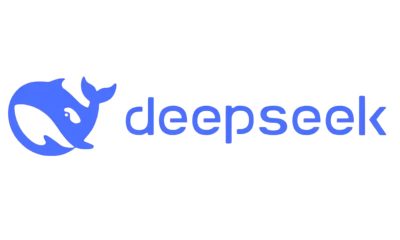
 AI3 months ago
AI3 months agoDeepSeek AI Faces U.S. Government Ban Over National Security Concerns
-

 Technology2 months ago
Technology2 months agoiPhone 17 Air and Pro Mockups Hint at Ultra-Thin Future, Per Leaked Apple Docs
-

 AI2 months ago
AI2 months agoGoogle Gemini Now Available on iPhone Lock Screens – A Game Changer for AI Assistants
-
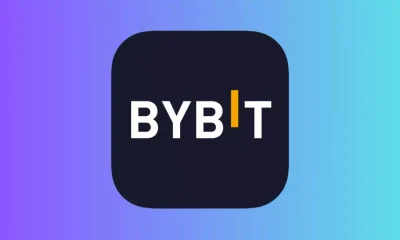
 Technology3 months ago
Technology3 months agoBybit Suffers Record-Breaking $1.5 Billion Crypto Hack, Shaking Industry Confidence
-

 Technology3 months ago
Technology3 months agoPokémon Day 2025 Celebrations Set for February 27 With Special Pokémon Presents Livestream
-
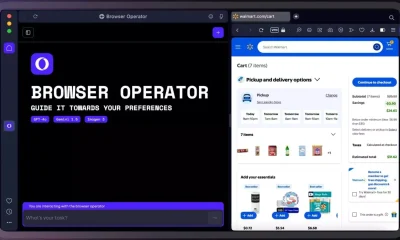
 AI2 months ago
AI2 months agoOpera Introduces AI-Powered Agentic Browsing – A New Era for Web Navigation
-

 Technology2 months ago
Technology2 months agoApple Unveils New iPad Air with M3 Chip and Enhanced Magic Keyboard
-
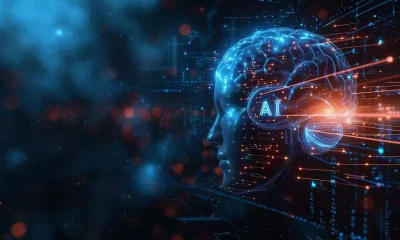
 AI2 months ago
AI2 months agoChina’s Manus AI Challenges OpenAI with Advanced Capabilities





